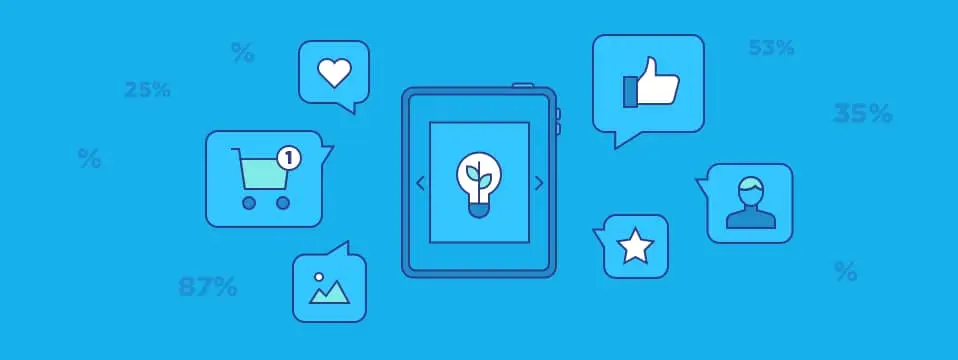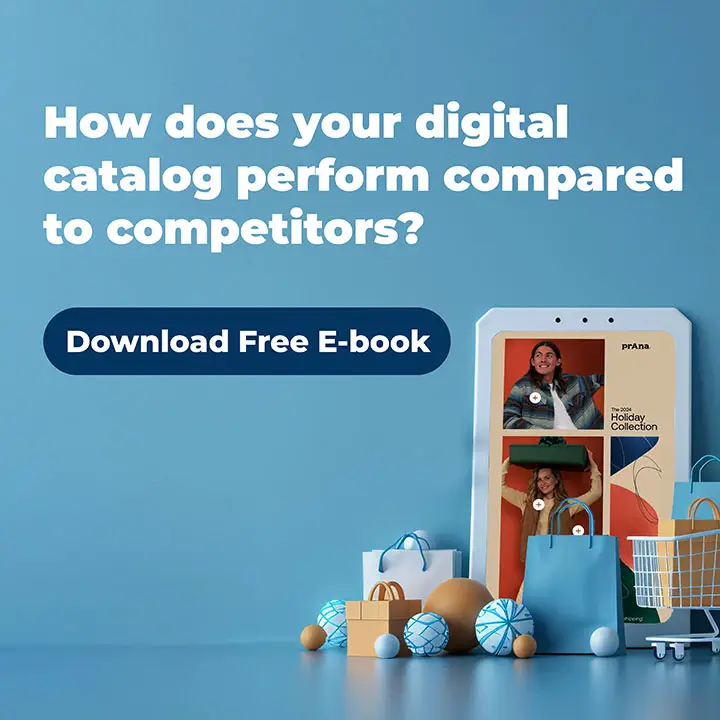Before big-name retailers like Victoria’s Secret, Argos and IKEA reacted to consumer behavior changes, every year, they would print catalogs in the millions. The enormous reach of print catalogs was a sales and marketing powerhouse, and their revenues were heavily dependent on them.
Harvard Business Review (HBR) attributes part of the print catalogs’ effectiveness to consumer psychology and that they increase the vividness of certain products by “enhancing the reader’s ability to visualize and imagine product usage experiences.” HBR adds vividness is a powerful influencer of consumer behavior as “it increases consumer involvement and joy in the purchasing process.”
Print catalogs were also:
- Standout engagement tools that built brand awareness;
- Primary sources of information for sales and marketing staff;
- Tactile in nature, which extended brand exposure by using smell, touch, and sight.
But, in today’s world of the internet of things, consumer behavior has wholly been disrupted. Now, before consumers make a purchase, they start most of their product research online (87%). And over the last few years, this has been a tremendous driving force behind making retailers switch from print to digital catalogs.
It’s likely that last year’s landmark events that saw several giant catalog retailers, like IKEA and Argos, stop printing their publications—will be a strong signal for other retailers to follow suit.
And if you’re a retailer who wants to start building up the reach of your digital catalog, is it enough to rely on a PDF that you uploaded to your website or app? And how will you measure its performance?
The main limitations of PDF catalogs

Created in 1993—a couple of years before the beginning of the dotcom boom—PDFs (portable document files) were made so that documents could be read on computers running different operating systems; this was a real boon for sharing documents around without fretting about compatibility.
But crucially, PDFs weren’t created with eCommerce stores in mind. They simply won’t cut the mustard when it comes to measuring and driving your digital catalog’s engagement. Nor can a PDF catalog display responsively on different devices.
Let’s dive a bit deeper into how the limitations of PDF catalogs are causing you to miss out on capturing the hordes of online shoppers and limiting your catalog’s ability to move them down your marketing funnel.
Limitation 1: On mobiles, shoppers have to zoom and drag a slow-loading document
PDF catalogs have a fixed-layout design rather than a responsive one, and retailers often design them for print. So, the user has to zoom in and drag their finger across the slow-loading document to read it—which is the last thing they want when their patience is already wearing thin from having to wait for your PDF file to download.
This leads to the next significant limitation of PDFs…
Limitation 2: Users need to download PDFs first
Before users can open and read your PDF catalog, they need to download it; on a mobile device, this could mean using a file manager and then another app to read the PDF. All of these extra steps become inconvenient and irritating hurdles that your visitors must get over before they can even get to see your content.
Digital landscapes are highly competitive environments, where everybody is competing for users’ attention and their time; shoppers are bombarded with ads, content, and push notifications.
While waiting for your PDF to download, the push notifications of your visitor’s fitness app have already got them on all-fours and into press-up position because it’s time to workout. But if your visitors are sent to your online catalog sooner, you’re in a much better place to keep them engaged.
So, the window of opportunity to capture and engage with online shoppers, who are easily distracted by other apps and don’t like added steps, could be lost if they have to wait for your PDF to download.
Limitation 3: There are few ways of tracking engagement
Once somebody downloads your PDF, tracking what they do with it—such as what they clicked on, what pages they looked at, and how long for—becomes problematic.
Without invaluable customer engagement data, you’re entirely in the dark about how your digital catalog performs, so you can’t optimize its content.
Limitation 4: You can’t share their content on social media
Social media has become one of the most potent online channels for eCommerce stores and brands. Retailers can share their product offerings with millions, or perhaps even billions of people.
People can’t easily share content within a PDF file on social media channels like Facebook. And with so much potential to reach and engage your audience on these channels, retailers can’t afford to miss out on sharing the beautiful, shoppable catalog experiences of their online catalog.
Online catalogs are the solution to the limitations of PDFs.

Online catalogs integrate with your website; users don’t have to download them. Your online catalogs have a responsive layout, and you can share them on social media. Last but not least, almost everything is measurable.
Online catalogs not only serve readers great images and visuals, but you can show them shoppable content, like videos to further entice them; or add infoboxes for more product information.
It’s the personalized, logical next steps in the customer journey that can be created and optimizes the amount of engagement you have with your shoppers. Collectively, these efforts nudge visitors further down your funnel and towards making a purchase.
For example, this could mean showing them a video or a personalized product promotion. These features create an optimized discovery experience that converts far more readers than a PDF or print catalog ever could.
Good online catalogs also:
- Sync with your eCommerce store and product inventory, where the product information, pricing, and availability update in real-time;
- Automatically detect links in your PDF catalog, so you don’t have to recreate them manually;
- Can be optimized for SEO, allowing you to capture more traffic;
- Connect and sync with Google analytics.
Print might not be dead yet, but downloadable PDFs as catalogs are obsolete.
As consumer behavior continues to evolve and adapt to digital transformation, many more retailers and brands will likely move away from print catalogs and eventually become dependent on their digital ones.
If you’re a retailer looking at transitioning from print to digital, or you’re thinking about creating and circulating a catalog, don’t shoot yourself in the foot by relying on a downloadable PDF.
At Publitas, we can help you quickly transform your PDF into an online catalog that’s mobile-friendly and measurable. We can then help you take steps towards a true digital content experience, including personalization, digital embeds, and shopping features.

Sounds interesting? Feel free to reach out and request a demo. Or, try any of our plans free for 14 days.

